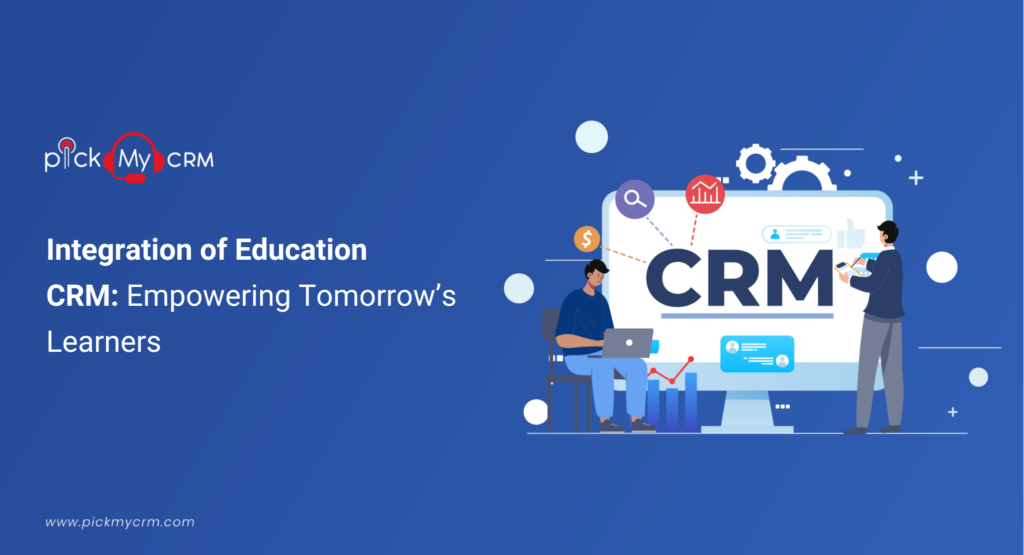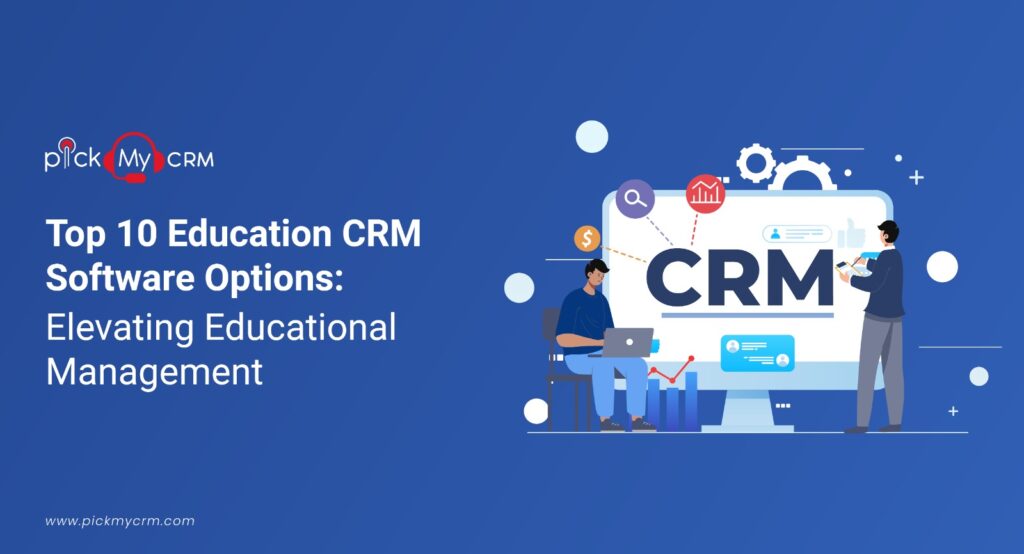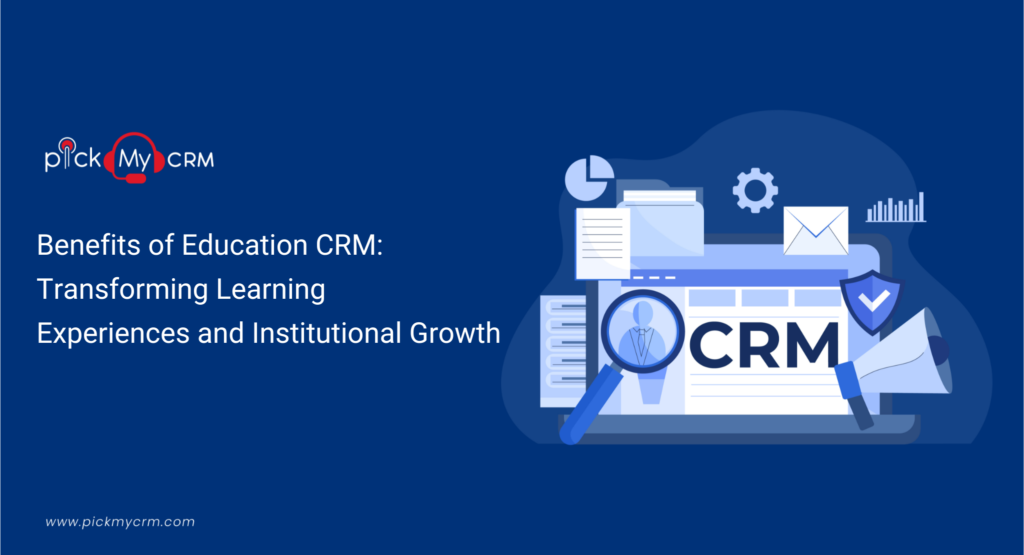How to Choose the Right Education CRM: A Comprehensive Guide
Why Choose an Education CRM?
Educational institutions engage with diverse stakeholders - students, parents, Alumni, faculty, and staff. A CRM centralizes this data, enhancing communication, efficiency, and decision-making, enabling personalized interactions, enrollment improvements, student progress tracking, and Alumni relationship nurturing.How to Choose the Right Education CRM: 10 Steps to Follow
Amidst the digital era, educational institutions are turning to CRMs for streamlined operations and improved communication. The right CRM choice, whether for Schools, Colleges, or Universities, can Profoundly impact success. Navigating the options requires knowing how to align a CRM with specific goals.Define Your Objectives
Begin by identifying the key objectives you want to achieve with a CRM. Are you looking to improve student recruitment, manage Alumni relationships, enhance communication with parents, or streamline administrative tasks? Clearly outlining your goals will help you narrow down the features and functionalities you need in a CRM.Research and Compare
Research Phase- Assess Needs: Identify your institution's specific requirements, whether it's improving admissions, enhancing student services, or boosting Alumni engagement.
- Explore Options: Research CRMs designed for education, focusing on those with positive reviews and a strong presence in the industry.
- Gather Insights: Read case studies and experiences shared by other institutions to gain practical insights into CRM performance.
- Feature Analysis: Create a list of essential features needed, such as student data management, communication tools, reporting, and application tracking.
- Integration Check: Ensure the CRM can Seamlessly integrate with your existing systems like SIS and communication platforms.
- Customization Flexibility: Prioritize CRMs with customization options to adapt to your institution's unique workflows.
- Scalability and Flexibility: Select a CRM with Scalability to accommodate growth and evolving needs.
- User Experience: Opt for an intuitive interface to ensure easy adoption and minimize training efforts.
- Vendor Reputation: Investigate the credibility, support services, and promptness of response from CRM vendors.
Assess Integration Capabilities
A good CRM should seamlessly integrate with your existing systems, such as your student information system (SIS), email platforms, and communication tools. It ensures smooth data flow and prevents duplication of efforts. Prioritize CRMs that offer robust integration options or provide APIs for custom integrations.User-Friendly Interface
Ensuring staff Adaptation to a User-friendly interface is vital for the new CRM's success. A complex and convoluted system might lead to resistance from your team members. Opt for a CRM with a clean and organized interface that requires minimal training.Customization Options and Mobile Accessibility
Each educational institution possesses distinct workflows. Seek a customizable CRM enabling tailoring to your needs, including personalized fields, forms, and reporting features, harmonizing the system with your operations. In today's educational sphere, mobility is paramount. Opt for a CRM with a mobile app or responsive web interface, facilitating on-the-go access to crucial data, notably beneficial for admissions officers, counselors, and remote personnel.Data Security and Compliance
Safeguarding sensitive student and staff data is essential. Verify that your chosen CRM complies with relevant data security standards like GDPR, HIPAA, or FERPA while offering strong data encryption and access controls.Scalability
In the dynamic landscape of education, growth is not just a possibility but an expectation. As your educational institution expands its student base, programs, and services, the tools you use need to keep pace. It is where the concept of scalability comes into play when choosing a CRM.Why Scalability Matters
- Accommodating Growth: Educational institutions experience fluctuations in student enrollment, and a scalable CRM can handle the influx of new data, interactions, and processes as your institution grows.
- Future-Proofing: Opting for a scalable CRM prevents rapid outgrowing, sparing you from the expense and effort of migrating to a new system shortly after implementation.
- Maintaining Performance: With rising user and data volumes, a scalable CRM upholds its speed and responsiveness, averting slowdowns that might impede productivity and user contentment.
Factors to Consider for Scalability
- Architecture: The CRM's underlying architecture plays a significant role in its scalability. Cloud-based CRMs often offer better scalability, as they can allocate resources as needed.
- Data Handling: A scalable CRM efficiently manages larger datasets without compromising data integrity or retrieval speed.
- User Load: Assess the CRM's ability to manage increased users accessing the system.
- Customization: Check if the CRM's customization options extend to scalability. Can it be tailored to accommodate specific growth-related requirements?
- Integration: Scalability should extend to integration with other systems. Ensure that as you introduce new tools, the CRM can integrate seamlessly.
Reporting and Analytics
To make informed decisions, you need access to accurate data insights. Look for a CRM that offers robust reporting and analytics tools. The ability to generate custom reports, track student engagement, and measure campaign effectiveness can provide valuable insights for your institution's growth.Support and Training
Selecting the Right Customer Relationship Management (CRM) for your educational institution is just the beginning. To ensure a seamless transition and successful utilization of the CRM's capabilities, robust support and comprehensive training are essential Components. Let's delve into why these pillars matter and how they contribute to the success of your CRM implementation.Comprehensive Training
- Tailored Sessions: Customize training sessions for Different user groups like admissions, student services, and Alumni relations to ensure relevance.
- Hands-On Learning: Offer practical, hands-on training in a simulated environment to boost user confidence and proficiency.
- Ongoing Learning: Provide continuous learning opportunities and refresher courses to keep staff updated on new features and best practices.
Reliable Support
- Responsive Helpdesk: Maintain a responsive support team that promptly addresses user queries and concerns to prevent workflow disruptions.
- Knowledge Base: Create a comprehensive Knowledge base or FAQ section to address common issues and provide step-by-step guides.
- Personalized Assistance: Offer personalized support through phone, email, or chat for complex problems, ensuring expert guidance.
Timing of Focus
- Pre-Implementation: Introduce staff to CRM benefits, fostering excitement and understanding of how it enhances their roles.
- During Implementation: Provide training sessions during integration, addressing questions and clarifying usage.
- Post-Implementation: Continue with ongoing training sessions and assess staff comfort levels, addressing emerging challenges and new features.
Budget Considerations
Lastly, your budget plays a crucial role in your CRM selection. While opting for the most feature-rich CRM might be tempting, It's Essential to Choose a solution that aligns with your budget without compromising on the core features you need. Here's a comprehensive look at how to approach budget considerations for your CRM implementation.Understanding Costs
- Licensing Fees: Determine upfront CRM software costs based on licensing models, such as per-user or subscription-based pricing.
- Implementation Costs: Include expenses for data migration, customization, integration, and initial setup.
- Training Expenses: Budget for initial and ongoing training to ensure effective CRM utilization.
- Support and Maintenance: Consider ongoing fees for Technical support, Updates, and Maintenance.
Prioritizing Features
- Must-Have vs. Nice-to-Have: Identify essential features to allocate the budget effectively.
- Customization: Factor in costs for customizing the CRM to match your institution's workflows.
Considering Growth
- Scalability: Assess how a CRM's upfront cost aligns with its potential for accommodating future growth.
- Hidden Costs: Be aware of potential hidden fees, such as exceeding user or data limits.
Total Cost of Ownership (TCO)
- Long-Term Perspective: Evaluate the CRM's TCO over a defined period, considering customization and migration expenses.
Optimizing Value
- Vendor Comparison: Compare multiple CRM vendors' pricing structures and align them with your institution's needs.
- ROI Consideration: Assess potential ROI in improved enrollment, student services, or fundraising efforts.
When Is the Right Time to Choose an Education CRM?
Selecting the optimal time to implement a Customer Relationship Management (CRM) system for your educational institution is a critical decision that can impact its overall efficiency and success. To determine the right moment, consider these key factors.- Identify Challenges: Recognize pain points such as admissions overload, student service inefficiencies, weak Alumni engagement, communication gaps, or data disarray.
- Enrollment Cycles: Implement before or after peak enrollment periods to manage applications, student success, and alumni relationships.
- Strategic Timing: Choose periods of anticipated growth, process overhauls, budget allocation, and staff training availability for seamless CRM integration.
- Identifying Pain Points: Assess challenges in admissions, student services, Alumni engagement, communication, or Data-related challenges that a CRM could resolve.
- Enrollment Cycles: Consider implementing a CRM before or after peak enrollment periods to manage applications, prospects, and student success.
- Strategic Growth: Introduce a CRM when your institution foresees growth in programs, student body, or services.
- Process Overhauls: Integrate a CRM during process reengineering or digital transformation to optimize new workflows.
- Budget Planning: Choose a time aligned with budget cycles to allocate funds for Software, Training, and Customization.
- Staff Availability: Introduce the CRM During a period when staff can focus on training without significant disruptions.



